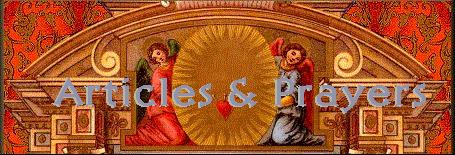
The Crucifixion

The Crucifixion
The centurion consulted with the executioner, and ordered the crucifixion of Jesus first. Golgotha was crowded, but the crowd was quiet. The soldiers stood awaiting a signal from the centurion to begin. The centurion gave the signal. Four soldiers moved in closely around the prisoners and began to strip them of their clothes. A murmur came from the crowd. The crucifixion had begun.
The time was a few minutes before noon. They sun was high and warm. Below the big bald rock, which was Golgotha, the leaves of the olive trees and the wild flowers shimmered in the soft breeze. The executioner laid the cross beam behind Jesus and brought him to the ground quickly by grasping his arm and pulling him backward. As soon as Jesus fell, the beam was fitted under the back of his neck and, on each side, soldiers quickly knelt on the inside of the elbows. Jesus gave no resistance and said nothing.
Once begun, the matter was done quickly and efficiently. The executioner wore an apron with pockets. He placed two five-inch nails between his teeth and, hammer in hand, knelt beside the right arm. The soldier whose knee rested on the inside of the elbow held the forearm flat to the board. With his right hand, the executioner probed the wrist of Jesus to find the little hollow spot. When he found it, he took one of the square?cut iron nails from his teeth and held it against the spot. Then he raised the hammer over the nail head and brought it down with force.
At the foot of the hill, John held Mary's head against his chest, both to comfort her and so that she could not see. Among the spectators, many turned away... some cried... some prayed aloud.
The executioner jumped across the body to the other wrist...
As soon as he was satisfied that the condemned man could not, in struggling, pull himself loose, he gave the signal to lift the cross beam. Two soldiers grabbed each side of the cross beam and lifted until the feet of Jesus were off the ground. Then four men pushed upward until the crossbeam was over the upright in place. Then came the nailing of the feet - the right foot over the left. Jesus was crucified. He faced the Holy City for the last time.
THE PAIN: It was almost unendurable. The pain in his wrists was beyond bearing; muscle cramps knotted his forearms and upper arms and the pads of his shoulders. The pectoral muscles at the sides of his chest were momentarily paralyzed. This induced in him involuntary panic ? while he could draw air into his lungs, he was powerless to exhale. When this happened, Jesus would raise himself on his bleeding feet. As the weight of his body came down on the insteps, the single nail pressed hard against the top of the wound. Slowly, steadily, he was forced to raise himself higher until his shoulders were on a level with his hands. Then for a minute breathing was rapid and easier. He fought the pain in his feet in order to breathe for a few moments. Then, unable to bear this pain any longer, he let his torso sag lower and lower, and his knees projected a little at a time until he felt himself to be hanging by the wrists. And this process was repeated again and again.
In the meantime, the sky continued to darken. It was not a sudden thing, but a continual change to a robin's egg blue and then on to a darker blue. Many in the crowd pointed to the sky. Some said that a storm was coming, and the crowd began to break up, hurrying to the gates to get shelter before the storm broke. The blue deepened until the darkness of dusk descended over all.
There was little interest in the fate of Jesus after the first hour. Only the high priests remained. Most of the curious had left because of their fear of the mid?day darkness. The birds were hushed. Everything was still.
The only sounds were the moans of the dying.
While the soldiers were gambling for Jesus' tunic, he broke the silence: "Father, forgive them...” It was so unexpected that the soldiers stopped the game briefly, for even in their half?drunken state, the extraordinary words must have brought a moment of wonder.
Jesus had uttered a prayer, asking for forgiveness not only for the soldiers who had crucified him, but also for the high priests, the Pharisees, the people, the world. It even included the man with the disordered mind who had destroyed two people in one-day - Judas Iscariot.
Love. This is what he meant by love.
SCRIPTURE PASSAGES
Matthew 27:39-56
Mark 15:23-39
Luke 23:33-46
John 19:17-37